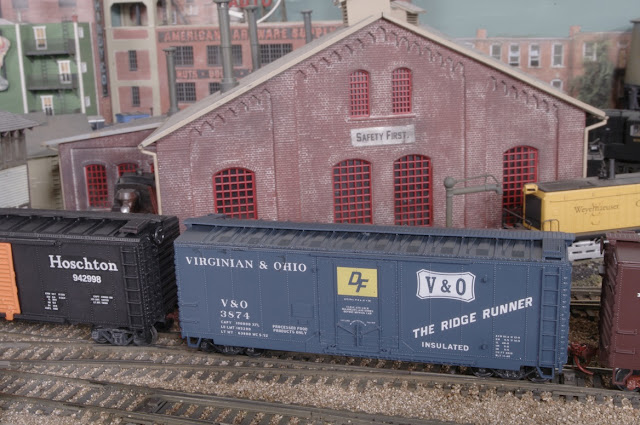The Main Street station was built in 1901 as a union station by both the Chesapeake and Ohio and Seaboard Air Line railroads. You will note that the Seaboard train on the right is not stopping at this station -- the SAL moved out of Main Street several years earlier, and it was used only by the C&O at this point. C&O passenger service stopped in 1971. The station, not used for rail passengers, passed through various owners and a severe fire over subsequent decades. Eventually it was acquired by the City of Richmond, which wanted to restore passenger service in it on the old C&O line to Newport News, which had Amtrak service reinstated. It returned as an Amtrak station in 2003, and currently two or three Amtrak Newport News trains each way stop there daily. The Florida trains stop at the Richmond Staples Mill Road station and proceed south over the former ACL, bypassing Main Street.
This drone shot from the web shows an Amtrak train using the current station facilities. Only a single track passes the station on this side. The track and the station platform are on the second-floor level of the station. The interior has been extensively restored and refurbished and is also rented out as a wedding and event venue by the city.When I was a kid in the 1950s, I didn't have much hobby money. Most of it went to buying Model Trains, MR, and RMC at the local hobby shop. When something inspired me, I'd use shirt cardboard to rough out a model, or sometimes I could upgrade to the bigger sheets of white poster stock from the stationery store. I revisited that idea several months ago when I built a model of the baggage elevator at the Springfield, MA Amtrak station.
More recently, I began to think about expanding on this childhood idea for a larger N passenger project. I could use white poster stock from Walgreen's and foamcore from Michael's, and I could mount the station on a double-wide T-Trak module. This would be a low-budget project, too. A double-wide T-Trak module kit is $25.00. I note the price of foamcore has gone up at Michael's, it's now two sheets for $10.00, when it used to be $3.00 for a single sheet, but this is still bearable. I have most of the Unitrack on hand.
I was able to get basic dimensional information from the web, as well as a good many photos of the building from all angles. I plan to rough out a basic shape and gradually add details. As much as possible, I want to add "wallpaper" from web images to the building sides, with textures from web dealers like Clever Models where I can. Dimensionally, it looks like a full-scale N version of the headhouse building will fit on a T-Trak module without compression. The shed will be foreshortened, and it will be exterior only, since tracks no longer go into it.
I'll post progress photos as I move along.


































